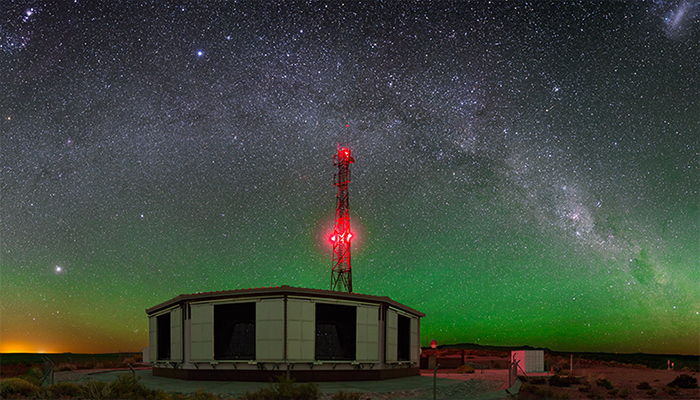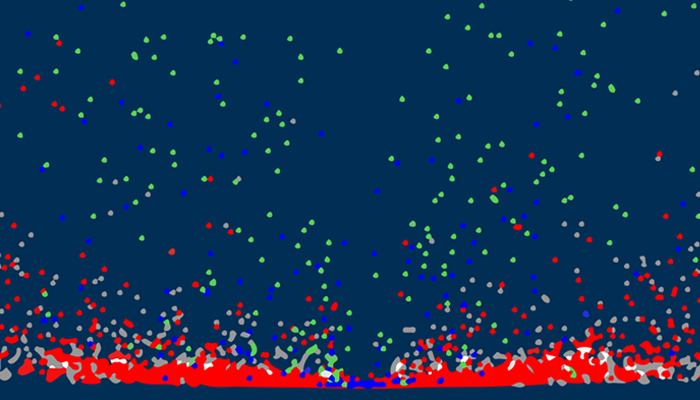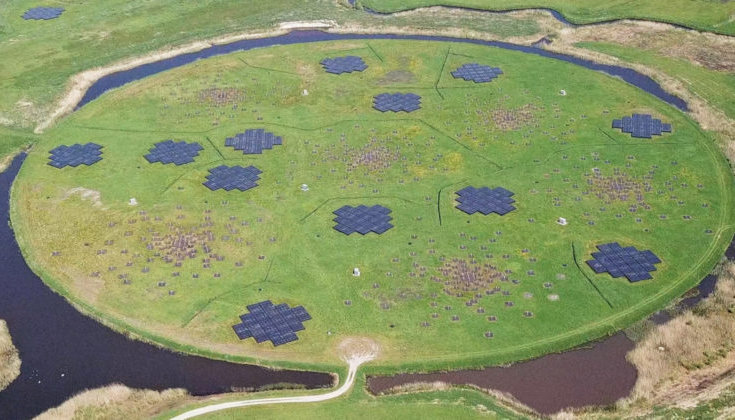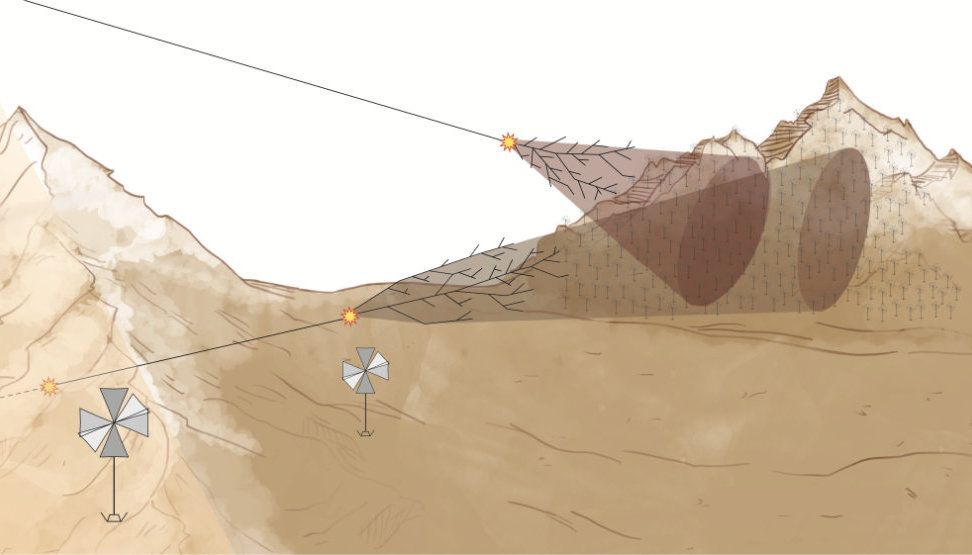The Radio Detection Group at the Institute for Astroparticle Physics (IAP)
Exploring radio emissions initiated by cosmic particles at the highest energies, the Radio Detection Group at IAP performs research on one of the most profound mysteries in contemporary physics. Our research focuses on the interplay between cosmic phenomena and ground-based radio detection. Our group consists of members of prominent experiments such as the Pierre Auger Observatory, IceCube, LOFAR/SKA, and GRAND, as well as the CORSIKA simulation code. Our work covers all main areas of analysis, research software development, the theory of radio emission and research & development for the realization of radio detection experiments. We always offer interesting topics for Bachelor and Master theses.

The Auger Radio Detector supplements the Pierre Auger Observatory's network of particle detectors and optical fluorescence telescopes with 1,660 dual-polarized radio antennas sensitive in the frequency band from 30 to 80 MHz, thereby enhancing Auger's capability to observe extensive air showers induced by high-energy cosmic particles.
More
Radio detection within the IceCube Neutrino Observatory follows two avenues. The IceCube/IceTop Surface Array Enhancement as well as the IceCube-Gen2 Radio Surface Array will be built up of stations consisting of scintillators and radio antennas with a common DAQ to measure cosmic ray air-showers. IceCube-Gen2 will, in addition, have a large array of radio antennas melted into the ice to detect radio signals that are produced by extremely high-energy neutrino interactions in the Antarctic ice
More
CORSIKA is a sophisticated Monte Carlo simulation code, which is extensively utilized for modeling the interactions of high-energy cosmic rays with the Earth's atmosphere, providing essential insights into the development and characteristics of extensive air showers. CoREAS is an extension to CORSIKA, which calculates the radio emission from a simulated air shower. The new CORSIKA 8 code is intended to succeed the original FORTRAN version of CORSIKA to support the community with reliable simulations for decades to come, and also supports the simulation of particle showers in dense media such as antarctic ice.
More
LOFAR (Low-Frequency Array) is a radio telescope operating at low frequencies, which is used to study astrophysical phenomena, including cosmic ray air showers, pulsars, and the Epoch of Reionization. We are also involved in adapting and applying the low-frequency part of the future Square Kilometer Array to cosmic-ray detection.
More
Radio detection of air-showers has proven a reliable and cost-effective technique for detecting air showers initiated in the atmosphere by cosmic particles. As a consequence, a new generation of radio detectors is now evolving at much larger scales. The Giant Radio Array for Neutrino Detection (GRAND) is envisioned as an array of wide-band radio antennas aimed at detecting air showers induced by high-energy neutrinos. In its final stage, it is foreseen to cover a total area of 200,000 km^2. These new detection scales call for upgrades in software and hardware and open new possibilities in theoretical analyses.
More